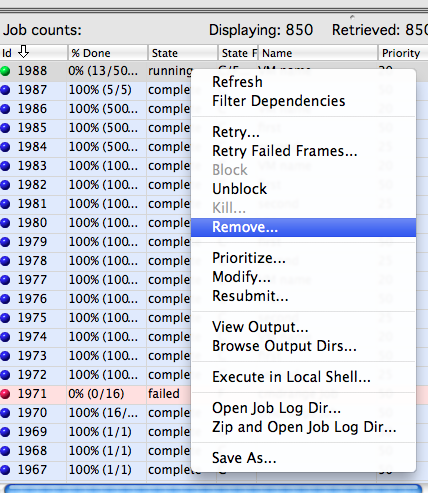Mobile access, augmented priority controls, and new workstation management tools highlight this release.
PipelineFX has released an update to its flagship render farm management software Qube. Version 6.4 includes new tools for smart farming, the ability to access Qube via smartphone, set priority limits for non-privileged users, and more.

Render farm management was one of the hot topics at Siggraph 2012 earlier this year, as a critical mass of potential users have come to the conclusion their homegrown methods of managing large rendering operations are often way more cumbersome and time-consuming than the specialized software now available.
PipelineFX defines “smart farming” in Qube as the ability to make more sophisticated decisions about rendering workflows, as opposed to previous generations of render farm management that were more or less glorified file lists with percentage and size readouts.
One new smart farming feature in Qube 6.4 is QBLocker, which enables individual artists to add their workstation to the render farm at the CPU core level, or reclaim their workstation when they need all of its resources. New priority limits also follow this line, giving administrators the ability to limit the amount of control an artist or student has regarding setting task priorities, ending potential competition between artists and render managers (often called “wranglers” in the film and game industry).
Other new features in Qube 6.4 include:
MobileView—A free mobile or web app (first released separately in July) for connecting to the render farm; the page views are specifically enhanced for mobile use.
Reporting Functionality—Displays reasons why a job is pending, allowing for more informed troubleshooting decisions.
New Administration Tools—GUI-based worker removal with a right mouse click; MySQL Check/Repair applied from inside the Qube GUI, and “Studio Overrides” that allow a system admin set up GUI preferences and defaults for the entire studio.
More Job Types—Dynamic Allocation for Nuke and Houdini, eliminating the need for multiple start-ups or excessive data transfer times; improved V-Ray support for DBR (Distributed Bucket Rendering); enhanced render elements support, improved logging, and more efficient termination of 3ds Max jobs.





